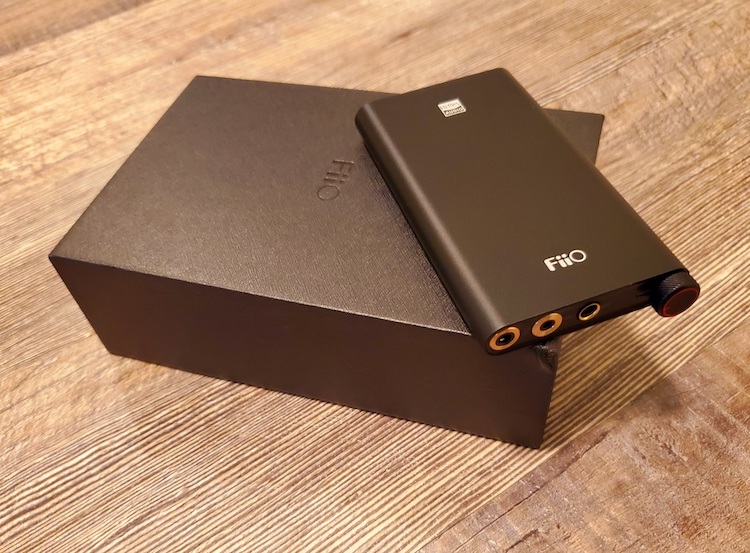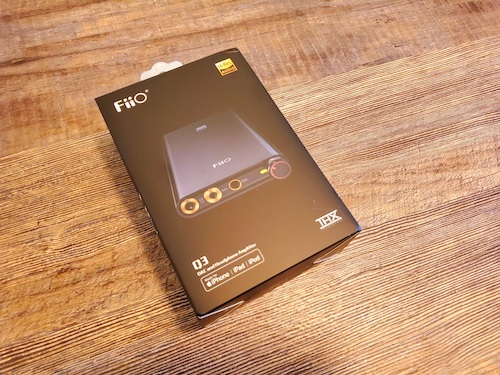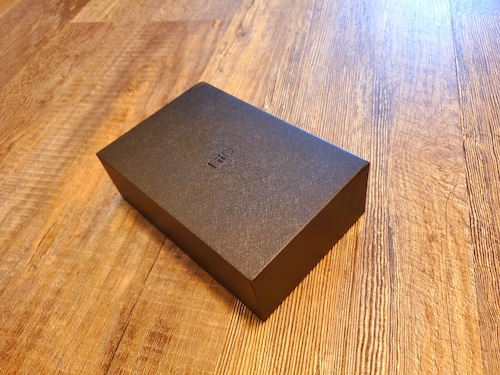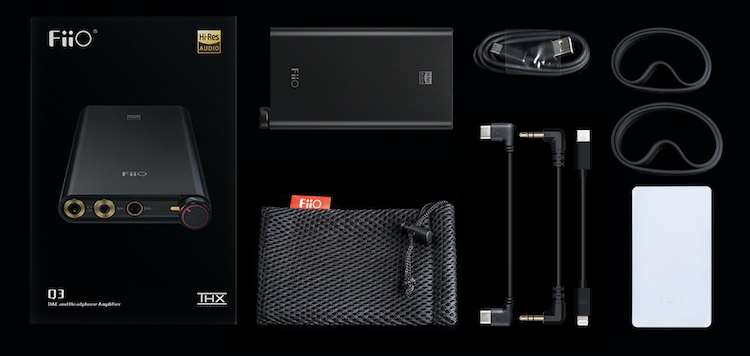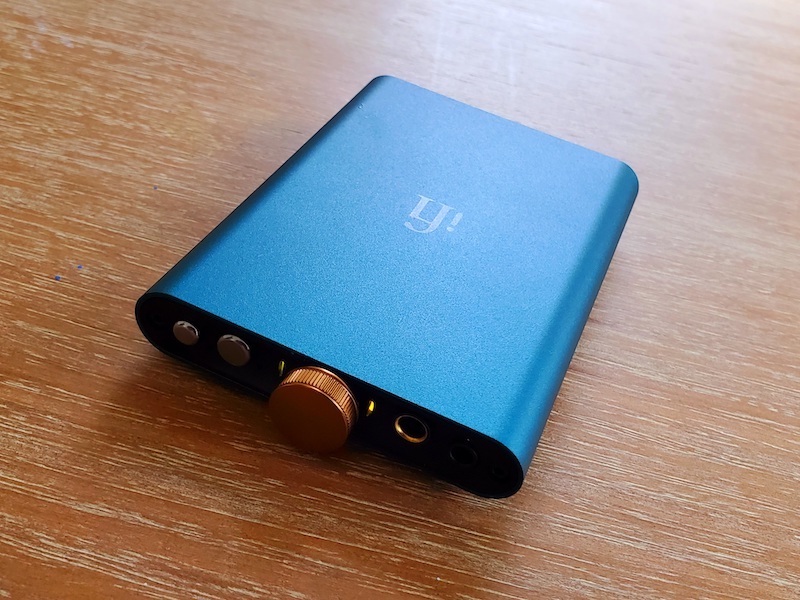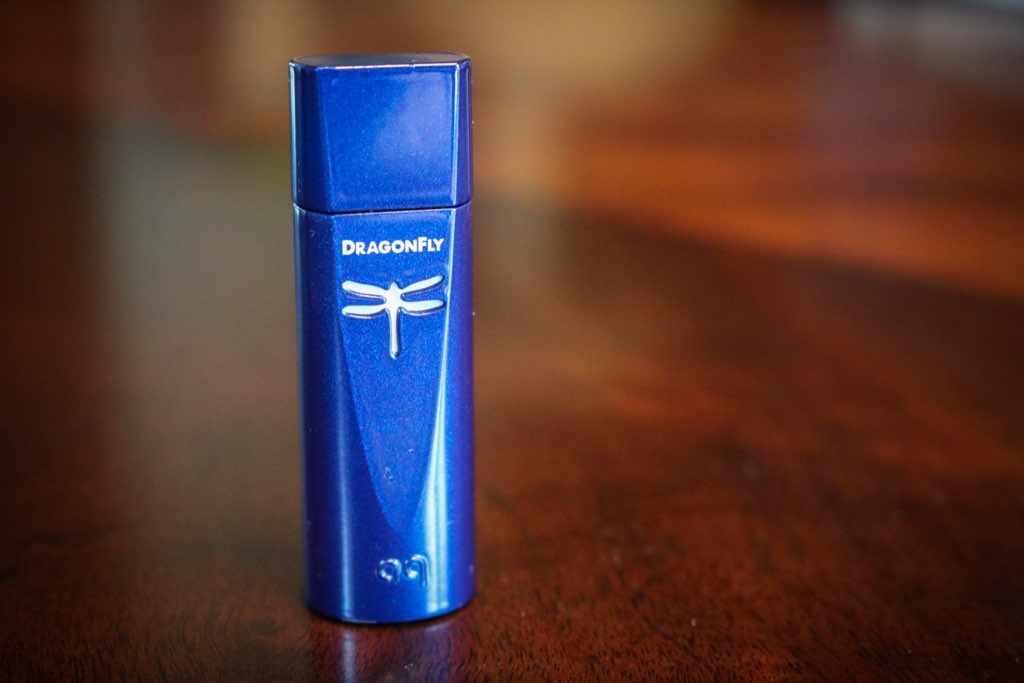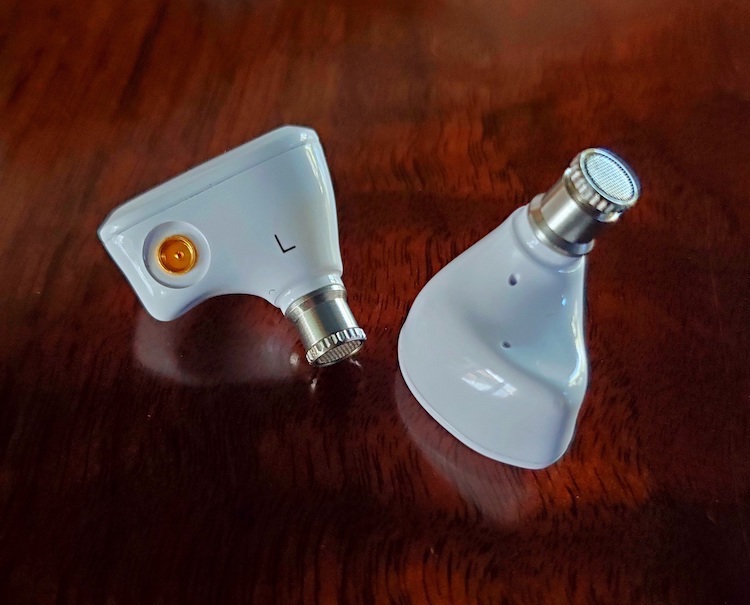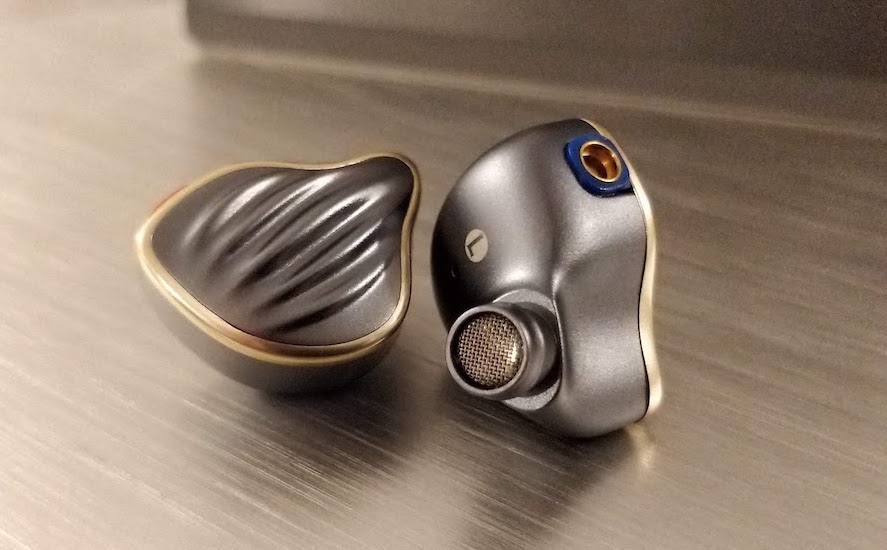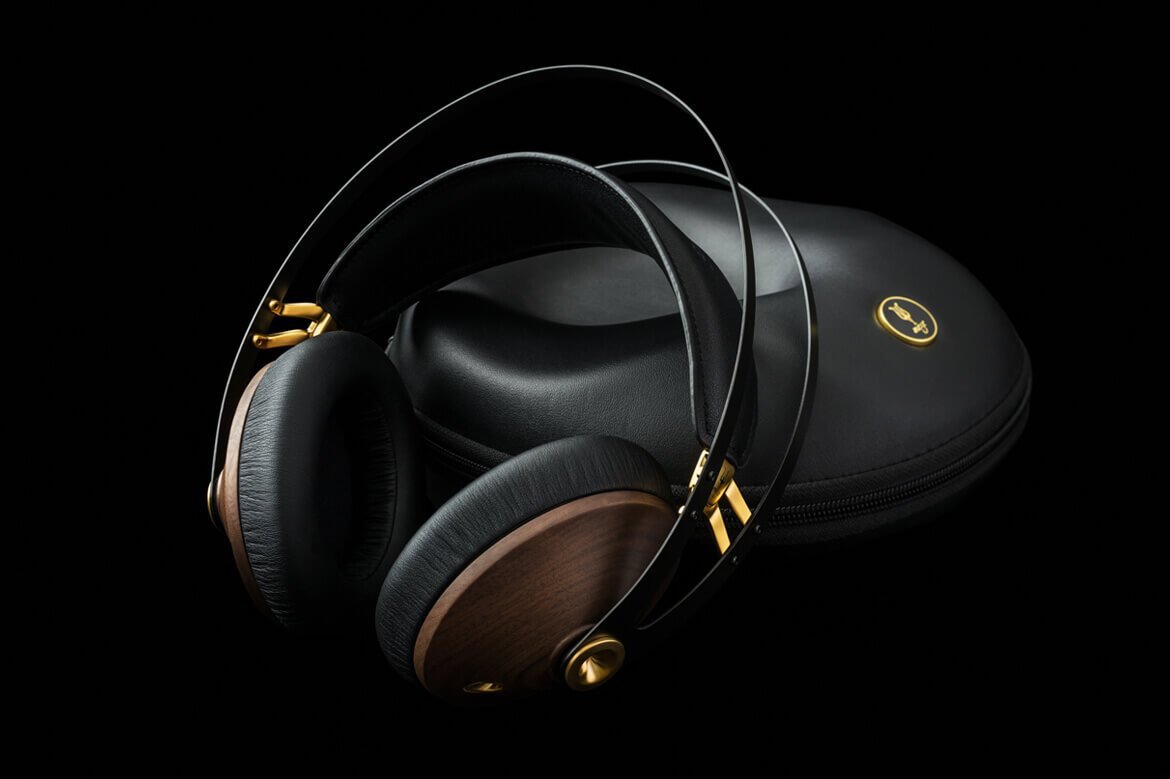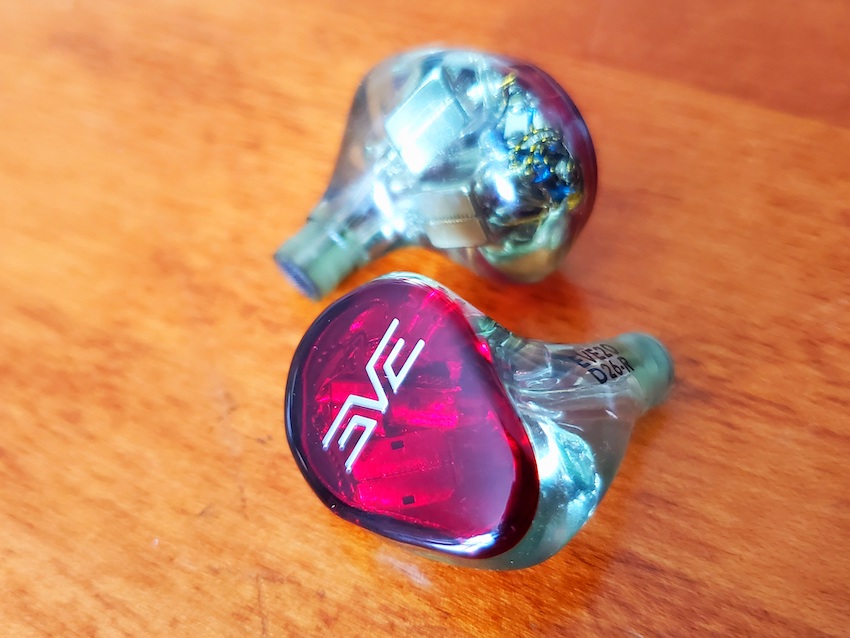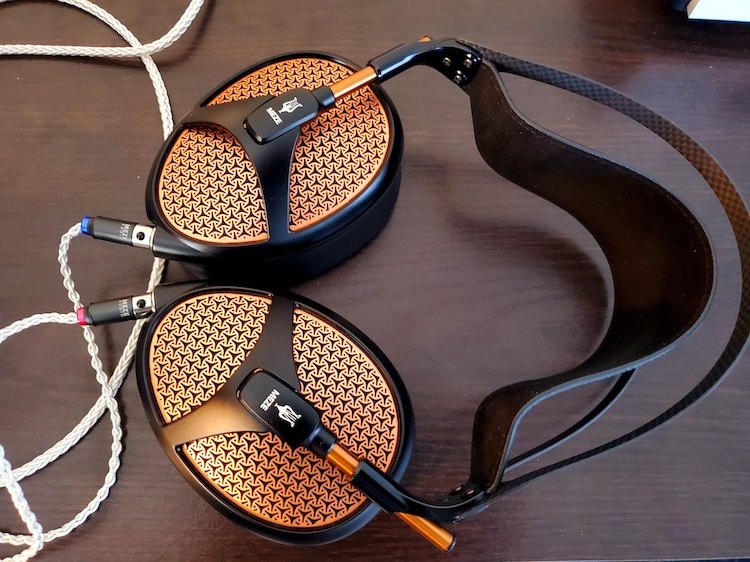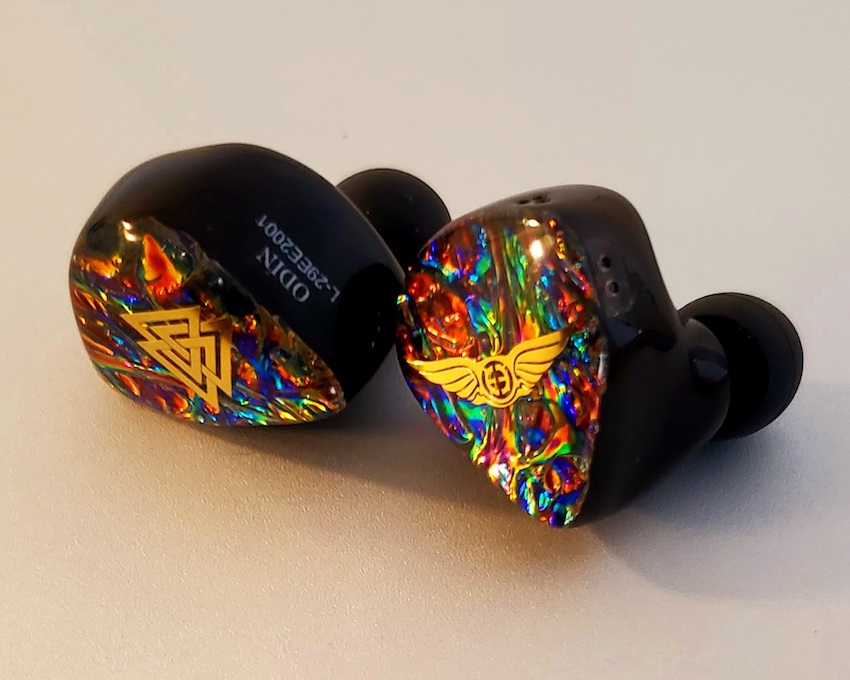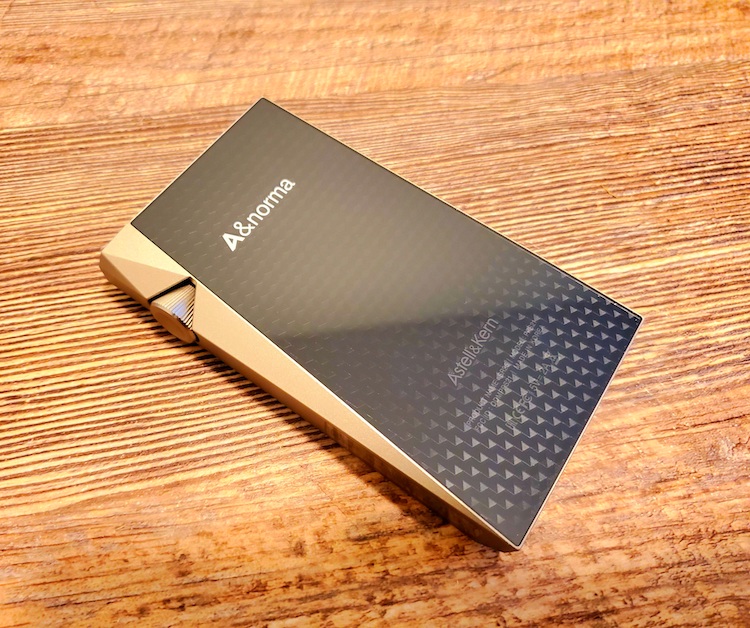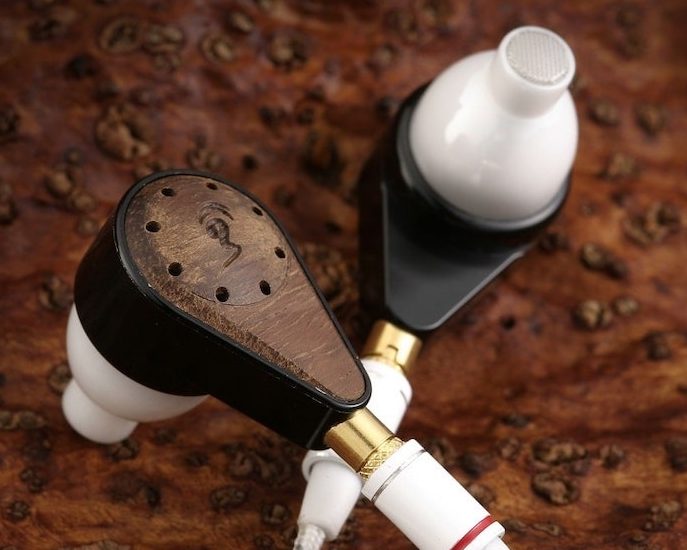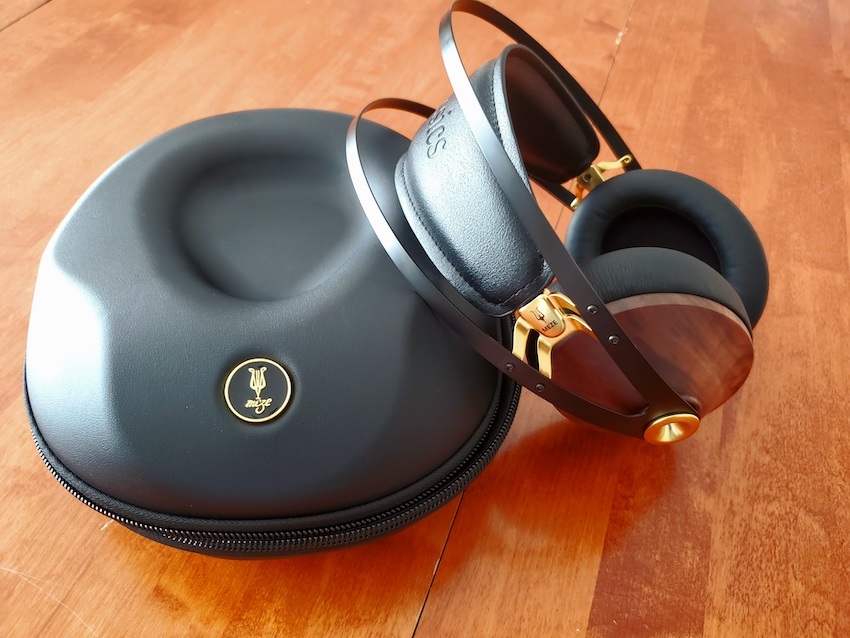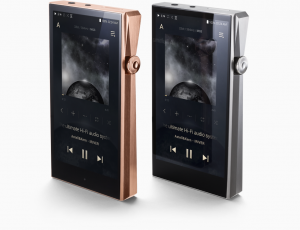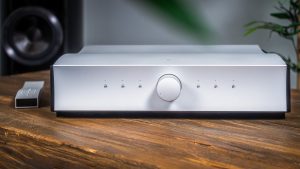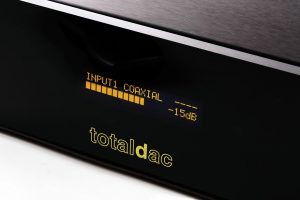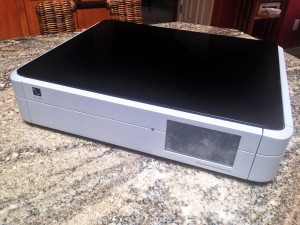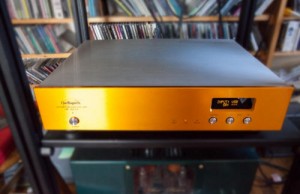If you think about it, every musical instrument has its birth, grows its shape, as it chooses its skin—metal, wood, glass, reeds—and develops its own unique tone / timbre. Though there are various families—woodwinds, brass, strings, keyboard, idiophones, friction instruments, and percussion—that share, within families, similar to overlapping voices. And there are literally hundreds of different instruments with unique voices. Perhaps, the various HiFi and headgear companies in world are much like musical instrument makers, in that they attempt to give a voice—warm, neutral, bright, detailed, Class A, transparent, a combination thereof—and a form—tubed, solid-state, reflex loaded, planar, etc.—to their various creations, recreations. Think of a company. Now think of its voice and its form. They all have voices, they all have forms. This brings us to a relatively new voice and form for me—FiiO.
I came to know the FiiO via its FH5 ($259) In-Ear-Monitor (IEM). The FH5 delivered potent bass, a rich midrange, and good extended highs, that were never harsh, strident, or sibilant. It remains one of my favorite IEMs under $300 and was listed as one of AudioKey Reviews' Best Products of the Year in 2020, for under $500.
The FiiO Q3 ($149) represents the second product of a similar voice from FiiO and it is equally impressive in form factor, aesthetic, and technical abilities. But, how does it sound? Yes, there is a family resemblance in the voices of these two products—an IEM and a DAC/Amp—in terms of musicality, transparency, engagement. And value per dollar spent continues to be truly impressive. But, really how does it sound?
REFRAIN: Unlike most reviews, this review will be non-sequential, as it will start with how the equipment actually sounds and not the process of physically "undressing" it and/or laying out its various accoutrements, specifications, etc. Think of this review then, as a non-linear movie—Memento, Kill Bill, Pulp Fiction, Eternal Sunshine of the Spotless Mind, The Queen's Gambit, In the Shadow of the Moon, etc—that, likewise, starts at the end and winds its way to the beginning.
Sound
The FiiO Q3 whether placed between iPAD, iPhone, or Mac performed brilliantly and easily with a number of IEMs / headphones—FiiO FH5, iBasso IT00, VISION EARS EVE2020, Meze 99 Classics. For the review the FiiO Q3 was paired, primarily, with the FiiO FH5 and the Meze 99 Classics.
The FiiO Q3 presents a very natural musicality that is never irritating or boomy (until bass boost is engaged) or bereft of detail. There is a level of transparency in this $149 DAC/Amp that would not have been possible several years ago, let alone a decade, and this is truly astounding. How many of the two-channel folks reading this have assembled systems (boulders) via an uphill journey, only to have them come apart or to not meet expectations (roll back down the hill), which leads inevitably to the whole, uphill-system-building journey all over again. This being a, decidedly, Sisyphean—actually or seemingly endless and futile—task. Now imagine products / headgear (small rocks) that are far more amenable to system building, more prone to play well with others, able to congregate in a small spaces, transportable for OTG listening, and that eliminate a chief factor in sound quality / delivery of one's music—the room. Given the rapid unfolding of technology, an incredibly mature and maturing voice, from these new technologies / products, the size of the products in questions, and headgear or headfi becomes a compelling way to engage and enjoy one's music at home or On-The-Go (OTG). And the FiiO Q3 demonstrates a powerful claim to that quickly unfolding reality.
The FiiO's volumetric cube—sound stage—is quite large and, at times, holographic, in that it spans good depth and height and width and, yet, is intimate when called to be so. Positioning and layering are also quite good as is image solidity and there is very good transparency and thus detail retrieval. Though the best and the more expensive across this category would, no doubt, extract more detail, nuance, and microdynamics.
Bass
The FiiO Q3's bass goes deep, is taut, rumbles when called upon to do so, and provides sufficient microdynamics to flesh out tone / timbre and texture. Massive Attack's "Angel" (MEZZANINE, Virgin) rolls potently, powerfully across Meze's 99 Classics headphones (and every IEM, Headphone paired with it) with drive and determination, which is quite impressive. I have to consult the specs. to see again how powerful is the Q3 into the 99 Classics' 32Ω load, and it is a 160mW, three times higher than the 99 Classics' 50mW specified maximum. David Holland's "B-40/M23-6K/RS-W" (Emerald Tears, ECM) plays and the bass is now agile, resolute—tight, driven, and of good pace. The next composition of the album "Under Redwoods" follows undeterred (as I do not want to move) and it is contemplative piece with space / quiet and air adding to the composition and defining its environment, as Mr. Holland's fingers are tracked beautifully across his bass. All handled incredibly well by the Q3, Meze 99 Classic and the FiiO FH5 duos. The above has been without bass boost. Engaging Bass boost, on the other hand, was not always a better option and, at times, "boomy" would show up. Whereas simply increasing the volume a wee bit solved and solved well the need for additional bass slam, rumble, and certainly transparency (Fletcher Munson). That said, engage bass boost at your own musical risk.
Midrange
The true surprise has been the naturalness of the FiiO Q3's midrange, which conjures a nearness of the DragonFly Cobalt's, one of AudioKey Reviews' Best Products of the Year for 2020, while increasing overall transparency and very slightly widening the soundstage volume relative to the Cobalt. On Shirley Horn's "Beautiful Love" (You Won't Forget Me, Verve) a track that I have used, literally, for decades to voice and understand various pieces of equipment, the Q3 performs beautifully. The microdynamic, inner detail, of Shirley's vocal articulation, the soaring notes, the texture and tonality of Toots Theilemans's harmonica, and the freeing of across-the-board detail, and engagement is "top shelf" and certainly for a player at a $149 price point. And when a song or track or a movement called for the ethereal or the holographic or the intimate the FiiO Q3 proved a very apt renderer.
Treble+
Vilde Frang's "Allegro Molto II" (Veress String Trio/Bartók Piano Quintet, Alpha) has become one of my favorites movements for sound stage determination—depth, width, positioning, layering— via the numerous spatial cues and lightening fast transients, as raps, plucks, bows, and knuckling of violin or viola or cello are constant throughout. The FiiO Q3's ability to track, to render wonderful transparency, solid positioning, and a very natural tone / timbre was, well, exceptional. Never was there a moment of stridency or grain or etch, as the treble was sweetly extended and quite detailed. I have long labored in the two-channel audio world, decades and decades and decades, and never has a $149 product delivered so much music. Incredible times that we live in and in so many ways.
The Wrappings and Accessories
The FIIO Q3 comes in a black, printed box that would be the type of box displayed in a department and/or audio / video store. The inner box, however, is a textured black box with the FiiO logo on its front surface, centered, and debossed, a decided step up from department store boxing. After removing the top lid, one finds the Q3 in a semi-transparent, plastic sheath, and nestled securely within a black foam frame. Beneath this layer are found the following accessories:
- Dual USB Type C head cable
- Lightening to Type C cable
- USB Type C data cable
- storage bag
- non-slip mat
- 3.5mm line cable
- binding strap
- quick start guide
- warranty card
Altogether, it is a clean, straightforward design that departs from a purely department store box via its black, textured inner-box, and its inner layout which adds a clean, well design containing box with a nice sense of style.
Design - Look and Feel
The FIIO Q3 itself is a sleek, beautiful, diminutive, matte black, DAC/Amplifier that sports smooth, rounded sides, and, relatively clean top and bottom faces with the requisite outputs and inputs, discussed in more detail below.
The FIIO Q3 fits beautifully in the hand and is easily pocketed as an On-The-Go (OTG) accomplice / companion.
Functionality
The FiiO Q3 incorporates the THX Achromatic Audio Amplifier (THX AAA™) Technology. And as stated by THX's tagline this technology represents the, "World's most linear amplifier technology for headphones and in-vehicle systems." Further, THX "ensures the ultimate no-compromise headphone audio experience by delivering the world's highest fidelity audio with infinitesimally low levels of noise, distortion and power consumption."
The benefits/features of the THX AAA™ technology as described by THX:
- Patented feed-forward error correction topology that nulls conventional distortion mechanisms.
- Reduction of harmonic, intermodulation, and crossover distortion by up to 40dB, resulting in a realistic and fatigue-free listening experience.
- Enables maximum output power for greater dynamic range and sound pressure level (SPL).
- A convenient modular solution which includes power supply, and can operate from a single 3.6V battery.
- Minimal bias current and highly efficient power management to optimize and extend device battery life.
- Scalability that allows incorporation into any headphone or in-vehicle amplifier design, with the flexibility to match the required fidelity, output power, and price point.
In sum, the THX AAA™ technology appears to reduce overall distortion, increase efficiency and thus battery life, while being able to scale—requirement match—"any headphone or in vehicle amplifier." My review experience with the Q3 would appear to validate the above.
On the Q3's top face from left to right are a 3.5mm Headphone / Line Out port, a 2.5mm balanced Headphone Out port, and a 4.4mm (Pentaconn) balanced Headphone Out port. And at the top face's far right is an On/Off, analog potentiometer volume knob, purported to eliminate low-level channel imbalance. Positioned at the volume knob's left, perimeter bisector is an indicator light that determines based upon color—blue (up to 48k), yellow (over 48k), and green (DSD)—the various sampling rates.
The Q3's bottom face from left to right (oriented for reading) features 1) a Bass Boost toggle-button (Off/On) 2) a Gain/Filter pushbutton 3) a USB-C port for both charging and data transfer and 4) a Charge toggle-button (Off/On). A short press of the Gain/Filter pushbutton switches between low/high gain (light on), while a double-tap allows one to cycle between sharp and slow roll-off filters.
The Q3's 1800 mAh battery provides for up to 10 hours of continuous play, with a 2.5 hour charging time to fully refresh the FiiO Q3.
The FiiO Q3 employs AKM's AK4462 VELVET SOUND DAC which supports up to 32-bit/768kHz PCM and DSD512. And at $149 this makes the FiiO Q3 one of the most potent, capable, and cost effective DAC/Amplifiers currently on the market.
Specifications
- Model: Q3
- Color: Black
- Weight: 110g (approximately)
- Audio Input: Type C USB
- Single-Ended PO: 3.5mm
- Balanced PO: 2.5mm/ 4.4mm
- Single-Ended PO: 3.5mm: 16Ω/150mW, 32Ω/160mW, 300Ω/19mW
- Balanced PO 2.5mm/4.4mm: 16Ω/180mW, 32Ω/300mW, 300Ω/35mW—Gain Off
- Balanced PO 2.5mm/4.4mm: 16Ω/190mW, 32Ω/325mW, 300Ω/100mW—Gain On
- Channel Balance: <0.2 dB
- Dimensions: 105mm x 59mm x 12.5mm
- Power Supply: DC 5V 2A (recommended)
- Battery Capacity: 1800mAh
- Charging Time: ≤2 hours
- Battery Life: USB PO 10 hrs/ BAL 8.5 hrs/ AUX In 19 hrs
- Native DSD: DSD64/ 128/ 256/ 512
- Sampling Rate: 768kHz/32-bit
- Chips: DAC: AKM4462; Amp module: THX_AAA28; LPF: OPA1662;
- XMOS: XUF208
- Frequency Response: 20Hz~65kHz, curve amplitude variation: -3dB
- THD+N: <0.0015% (USB IN)/ <0.0012% (AUX IN)
- Output Impedance: 3Ω (32Ω loaded)
- Channel Separation: ≥99dB (1kHz, 32Ω loaded)/ ≥103 (1kHz, Unloaded)
- AUX In: 20Hz~90kHz,curve amplitude variation: 0.4dB
- USB In: 3.1V (32Ω/THD+N<1%)/ 3.38V (Unloaded)
For more specifications check: HERE
Comparisons
The various DAC/Amps were partnered to a MacBook Pro, or an iPAD, or a Samsung S10, all were ROON enabled, with the Meze 99 Classics, the FiiO FH5, and the VISION EARS EVE2020 as selected headphones / IEMs.
Four well known tracks were used and along with the above headphones / IEMs to bring a body of differentiation between the various DAC/Amps. The tracks were:
- Joan Shelly's "Wild Indifference" (Joan Shelly, No Quarter)
- Olafur Arnalds' "Árbakkinn" (Island Songs, Mercury (Universal France))
- Massive Attack's "Angel" (MEZZANINE, Virgin)
- Eiji Oue's "The Firebird Suite" (1919 version): VII Finale (Stravinsky, Reference Recordings)
iFi Hip-DAC ($149.99)
Musically
Unfortunately, as I do not still have the iFi Hip-DAC, this comparison will then be formed of recollections across tracks played and detailed notes taken when I reviewed the iFi Hip-DAC. There are a great deal of similarities between these two equally priced DAC/Amps. Voicing is close both are musical, transparent, powerful, and very engaging. Neither is ever sibilant or strident or grainy. Perhaps the iFi Hip-DAC is a bit warmer across the midrange and the FiiO Q3 a bit more transparent.
Technically
In terms of power the Hip-DAC's balanced headphone output (400mW) has an edge over the Q3 at 32Ω (300mW) and an edge at 600Ω with 66.15mW to the Q3's 35mW, prior to "Gain" boost. The Gain boost, however, increases the Q3's power to 100mW. The FiiO Q3 decodes to DSD512 and samples to 768kHz/32-bit, while the Hip-DAC decodes to DSD256 and samples to 384kHz/32-bit. Suffice to say, that either will play 100% of the Qobuz catalog. However, only the Hip-DAC will decode Tidal's MQA files, while the FiiO Q3 will not and for some this may well be the differentiating factor. This is one of the tightest calls that I have yet to make on two pieces of equipment from the perspective of sound and technology and cost.
AudioQuest DragonFly Red ($199)
Musically
On the three tracks mentioned above the DragonFly Red provided good transparency and vocal articulation, beautiful sibilance-free highs, with good extension across the treble and bass, as attendant to a beautiful musicality. The FiiO Q3 brought more transparency, a larger, overall soundstage, and a sense of spaciousness that the Red could not match. The Q3's highs were sweet and beautifully extended, with not a sign of grain or sibilance or stridency. The Q3's bass was potent, taunt, quick, and detailed and it would easily reach to the depths of the Holy-Bass-Head-Grail with all but the most bass-addled IEMs and headphones.
Technically
The DragonFly Red is always close at hand given its thumbnail-drive size and its true plug and play ability, across PC / Mac / Android / iOS environments. The FiiO via ROON also proved platform agnosticism. Technically, the FiiO Q3 provides more power to the single-ended headphone output with 160mW/32Ω versus, approximately, 83.3mW/32Ω for the DragonFly Red. And the Q3's abilities to decode and upsample are a clear differentiator in that the FiiO Q3 decodes to DSD512 and samples to 768kHz/32-bit, while the DragonFly Red samples to 96kHz/24-bit. The Red will still, provide over 90% play-through of Qobuz's catalog, while playing 100% of Tidal's catalog inclusive of MQA. The FiiO, on the other hand does not come MQA equipped / certified and while it will play 100% of Qobuz's catalog it will, for now, play an ever-decreasing percentage of Tidal's catalog, as Tidal expands its MQA Masters. So, it's a balancing act with MQA versus no MQA, a 96kHz/24-bit cap versus no cap at all. One's choice may well be predicated on the subscribed music catalog.
AudioQuest DragonFly Cobalt ($299)
Musically
The DragonFly Cobalt, across the three tracks, provided an incredibly natural voicing, via a sense of ease and a sweet, extended sibilance free treble, that brought it the closest to an analog-like rendering of each song, than any of the other DAC/Amps compared here. The Cobalt's bass while very potent and on track for reaching the depths of the Holy-Bass-Head-Grail, was not the match for the Q3, which provided a more solid foundation across the entire bass region.
Technically
The DragonFlys maintain the selfsame technical attributes with regard to MQA and a 96kHz/24-bit cap. The Cobalt, like the Red will provide over 90% play-through of Qobuz's catalog, while playing 100% of Tidal's catalog inclusive of MQA. The FiiO Q3 will play, as mentioned above, an ever decreasing number of Tidal's catalog, as MQA Masters increase as a percentage of it. The Q3's technicalities, given its price, are impressive. But, in terms of actual music catalog playback, it is still a balancing act—MQA versus no MQA, 96kHz/24-bit cap versus no cap at all. Again, one's choice may well be predicated on the selected or subscribed catalog.
Compatibility (Synergy)
The FiiO Q3 was partnered to the iOs brothers—iPhone and iPad—and output through the following IEMs and headphones—iBasso IT00, FiiO FH5, Meze 99 Classics, and the VISION EARS EVE2020.
FiiO Q3 with iBasso IT00 ($79)
Can the FiiO Q3 accommodate IEMs at half its price point and still make music? This question was quickly answered when listening to a wide array of music—Classical, Blues, Jazz, Electronica, Folk, etc.—and also to movies with the iBasso IT00.Yes. The FiiO Q3 helped the iBasso IT00 to find every last measure of its voice, which translated to a rather impressive bass response, good overall imaging, a larger soundstage, increased transparency, and very good musicality. The Q3 will not, however, be able to lift the IT00 beyond its own internal (cost-parts) limitations and the last word in transparency and unfettered, bass and high-frequency extension will not be met. That said, the iBasso IT00, given its performance with the FiiO Q3, validates our earlier estimates, that it competes with IEMs well above its price point.
FiiO Q3 with FiiO FH5 ($259)
Perhaps these two beautifully designed pieces of FiiO equipment were voiced together, as they scaled exceptionally well, provided tight, prodigious bass, a beautiful midrange, increased transparency, and a smooth, sibilance free treble. There is nothing to complain about given the level of musical engagement and the technicalities that this combination provides.
FiiO Q3 with Meze 99 Classics ($309)
This duo was beautifully musical. The 99 Classics are easy to drive and the FiiO Q3 drove them beautifully. Further, the bass is potent and extended, the midrange rich and engaging, and the treble nicely extended. And did I mention how good they are with movies? This under $500 combination will provide musical engagement far above their combined price points.
FiiO Q3 with VISION EARS EVE2020 ($1300)
Can the FiiO, on the other hand, scale with an IEM nearly nine times its price?! The short answer to that is yes, absolutely. The combination, though not "real world" from the perspective of cost, was open, transparent, musical and together they cast a broad, deep soundstage. And bass? Thumping-tight, foundationally deep(!) and well differentiated, while the midrange, via the fortuitous placement of the dynamic driver at the EVE2020's midrange (not BAs), was rich, beautifully engaging, and also very transparent. The highs were sweet, quite extended, and completely free of sibilance. Again, not a real world marriage, but an incredibly successful marriage, nonetheless.
Conclusion
The FIIO Q3 ($149.99) will lift any and all smartphones, computers, and iPads to stellar heights. And at its current price point, it should be written upon anyone's short list, who is looking to upgrade the sound quality of all of the above. Further, it's small, not on the scale of the AudioQuest Dragon Fly series, but still small enough to pocket, palm, or to easily band to a smartphone for OTG listening. It is also stylish, minimalistic, and clean. Then, of course, there are its technicalities, which allow for DSD512 upsampling and 768kHz/32-bit decoding and at a price point of $149! This renders the entire Qobuz catalog completely under one's playback control and all DSD purchases/downloads easily handled. However, lacking MQA, to date, provides for ever-shrinking access to an ever-increasing percentage of MQA files in Tidal's growing catalog.
That said, I highly recommend the FiiO Q3 for the things it does so very well—technical upsampling/decoding abilities (at price point) and its beautiful, transparent rendering of music across all genres, and its design aesthetic. Bravo!
Pros: Technical abilities, sound, price, aesthetics, power
Cons: Lacks MQA
Music - Quboz exclusively
- Alexander Tharaud, Tharaud Plays Rachmaninoff
- Omar Sosa, Ballads, Calma
- Patricia Barber, Verse
- Rickie Lee Jones, Pop Pop
- Sade, Lovers Live
- Sheku Kannah Mason, Inspiration
- Tracey Chapman, Where You Live
- Olafur Arnalds, Island Songs
- Melody Gardot, My One and Only Thrill
- Melody Gardot, Sunset in the Blue
- Eiji Oue, Stravinsky
- Hilary Hahn, Tchaikovsky
- Mechell Ndegeocello, Bitter
- Jordi Savall, Tous les Matins du Monde
- Maxwell, Maxwell's Urban Hang Suite
- Sarah Jarosh, Undercurrent
- Igor Stravinsky, Stravinsky: Le sacre du printemps (The Rite of Spring)
- Annie-Sophie Mutter, Mendelssohn, Brahms: Violin Concertos
- London Grammar, If You Wait
- Stevie Wonder, Innervisions
- Marvin Gaye, What's Going On
- Miles Davis, Kind of Blue
- Jóhann Jóhannsson, Orphée
- Alexis Ffrench, Evolution
- Dave Holland, Emerald Tears
- Kremer, Trifonov, Dirvanauskaite, Preghiera/Rachmaninov Piano Trios
- Joan Shelly, Joan Shelly
- Magdalena Kožená, French Arias
- Andy Bey, American Song
- Erykah Badu, Baduism
- Kronos Quartet, Kronos Caravan
- Kandace Springs, The Women Who Raised Me
Ancillary Equipment
- MEZE Empyrean
- MEZE 99 Classics
- Rosson Audio RAD-0
- oBravo HAMT-1 SIGNATURE
- oBravo EAMT-2C IEM
- oBravo RA-C-CU IEM
- VISION EARS EVE IEM
- Final Sonorous III
- FiiO FH5
- iFi Pro iDSD
- iFi Neo iDSD
- LTA Z10E
- Border Patrol DAC
- Cayin N6ii/A01
- Cayin N6ii/E01
- iBasso DX220 AMP1 Mk II
- iBasso DX220 AMP9
- Astell&Kern SR25
- AudioQuest DragonFly Cobalt
- AudioQuest DragonFly Red
- AudioQuest DragonFly Black
- AudioQuest Dragon Tail
- AudioQuest Water Interconnects (RCA)
- AudioQuest Water Interconnects (XLR)
- AudioQuest Forest USB B-C Digital
- AudioQuest NRG-Z3 Power Cords
- Cardas Clear Interconnects (RCA)
- Cardas Clear Interconnects (XLR)
- Cardas Clear USB B-C Digital
- Cardas Clear Power Cords
- MacBook Pro
- MacBook iPad
- Samsung S10
FIIO Q3
Retail: $149
FIIO
2/F, F Building, Hougang Industrial Zone,
Shigang Village, Huangshi West Road, Baiyun District,
Guangzhou City, 510430, China.
Kermit Heartsong is a published author, writer, and working screenwriter, who brings an established writer's approach/perspective to Personal HiFi reviews. Kermit has owned numerous high-end and ultra-high-end components/systems and has tested numerous pieces of audio gear over the course of his life. And he is a music lover first and foremost with regard to the types of Personal HiFi equipment that he enjoys and enjoys to review.
In conjunction with Positive Feedback, Kermit, as an Associate Editor for PF, will focus on Personal HiFi and headphones for the venerable and long standing audio magazine. Kermit is currently Managing Director of AudioKey Reviews. AudioKey Reviews' mandate is to review Personal HiFi equipment from headphones to DACS to Amps/DAC to IEMs and, in doing so, to seek out that which is, above all, musical, transparent, and engaging.




